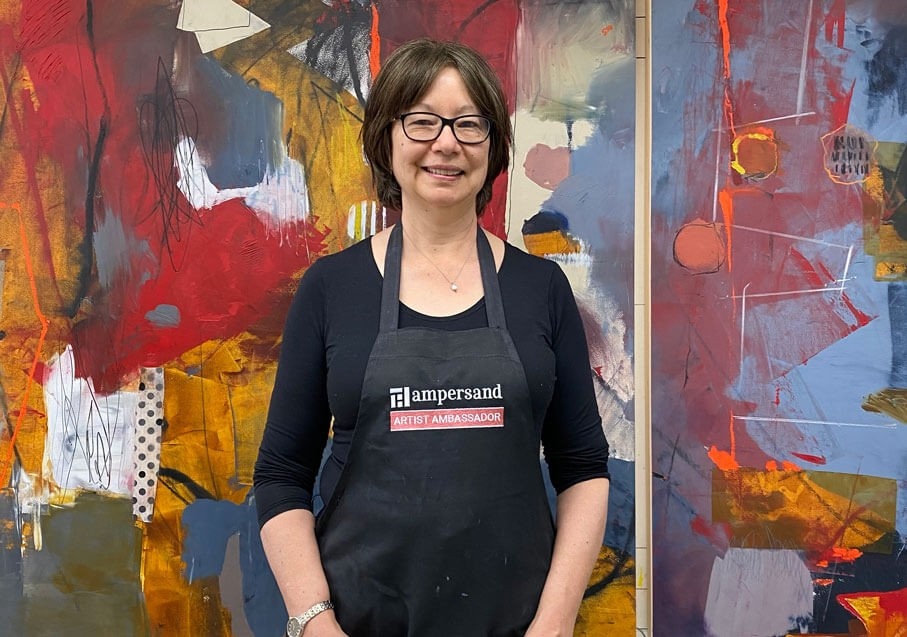Basic Oil Painting Materials for Beginners and Their Purchasing Tips
Cuerpo
What is oil painting?
Oil painting is a style of artwork created with oil-based paints. It involves painting on canvas using pigments whose binder is a drying oil medium.
Oil painting has the advantage of flexibility and depth of color. It can be done in many different ways, from thin glazes diluted with turpentine to dense, thick impasto. Given that oil paints are slow to dry, artists who practice oil painting are able to continue working on the paint for much longer periods compared to the time they’ll take working with other types of paints.

Basic oil painting materials
It's vital to have knowledge of the fundamental painting supplies and where to buy them if you're interested in trying oil painting but are unsure of where to begin. Oil painting supplies may initially seem scary and confusing, which is understandable. That's because, in addition to paint, you'll also need to stock up on supplies for other types of painting, such as turpentine and mineral spirits.
Nonetheless, when you understand the role each material plays in your painting artwork, you’ll be able to comfortably start painting with a fairly good understanding of how each material plays into the painting process.
The following are some of the materials you need to arm yourself with when you decide to explore the wonderful world of oil painting techniques, including cold wax oil painting techniques, to create great artworks:
- Paint
Oil painting necessitates the use of oil paint. If you were just getting started, as happens with all oil and cold wax artists, purchasing a kit that is stocked with all of the oil paint colors you’ll need would be helpful.
For oil and cold wax artists that are comfortable mixing colors, starting out with the bare minimum and simply buying individual tubes of white, black, red, blue, and yellow paint would be a great idea. Start with the 200-ml tubes.
- Brushes
You don’t have to stress yourself out by buying every single type of brush when just getting started with your oil painting, including cold wax painting with acrylics. That's because, once you start painting, you'll quickly learn what shapes and sizes of brushes you prefer and what effects you want to achieve in your paintings, which will shape the types of brushes you keep on hand.
For beginners, it is advisable to have a selection of one or two medium and large round brushes, respectively. These will be enough to enable you to learn what your painting preferences are.
- Turpentine or mineral spirits
When I wanted to learn encaustic painting, my professor told me that with oil paints, you should not clean your brushes in water and that an oil painting brush is cleaned using a paint-thinning solution.
When starting out with oil painting, you need turpentine to help you clean your brushes. You could alternatively opt for mixtures of odorless mineral spirits to help you with brush cleaning.
- A vessel for cleaning brushes
You’ll need a vessel with a coil inside to help you with the cleaning of your brushes. You can fill this vessel with turpentine or mineral spirits and gently rub the bristles of the brush against the coil to remove excess paint.
- Newsprint or rags
As is frequently taught during lessons on cold wax for beginners, you’ll need newsprint or rags on hand to help you with the cleaning of your brushes and drying the bristles after you’ve dipped them in the cleaning solution. Rags are great, but based on how you constantly change your colors, you’re likely to get more help from plain newsprint.
- Palate
A palette is the surface upon which you mix your paint. It can be a large piece of glass or ceramic, or a disposable book or palette of pages sold at art supply stores. When getting a palate, ensure it is large enough for what you’re doing.
- Painting surface
When you’re ready to paint in oil, you’ll need something to paint on. This doesn’t have to be on canvas. As long as you treat the surface with gesso, you can paint on it. Gesso acts as a primer and keeps the paint from deteriorating.
- Painting clothes
As an oil painting artist, it is inevitable that you’ll get spotted with paint at some point or another. To avoid smudging your other clothes, you must paint your clothes.
Purchasing tips for oil painting materials
Before you go out and purchase everything that comes in front of you as oil painting material, consider the following tips:
- First, determine the art technique you want to pursue, because knowing precisely which supplies are needed will save you time and money.
- Learn to plan your oil painting project because when you get an idea of everything you need, it helps you choose various variants to keep your purchase budget-friendly.
- Define your budget, and if you can, choose the best-quality materials. You can, however, try cheaper alternatives or student-grade supplies if you’re just a beginner trying out different techniques.
- Consider online shopping because you get more varieties and sellers with various offers. You can also buy in bulk to benefit from the associated discounts.
Need more information and purchasing tips for oil painting material?
You can get more information about oil painting materials and tips on how to purchase them by providing your details here so that someone reaches out to help you.










Comentarios